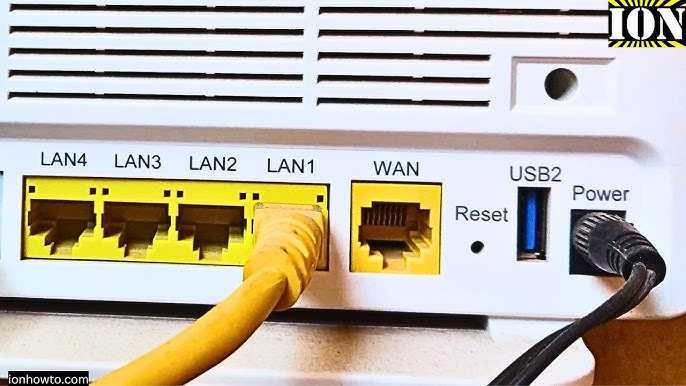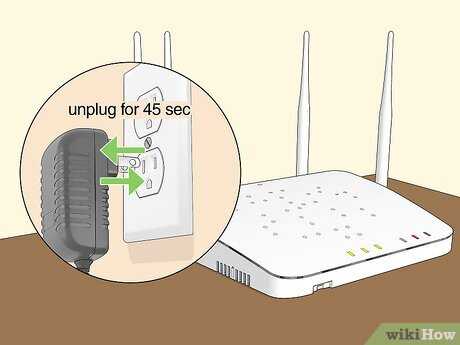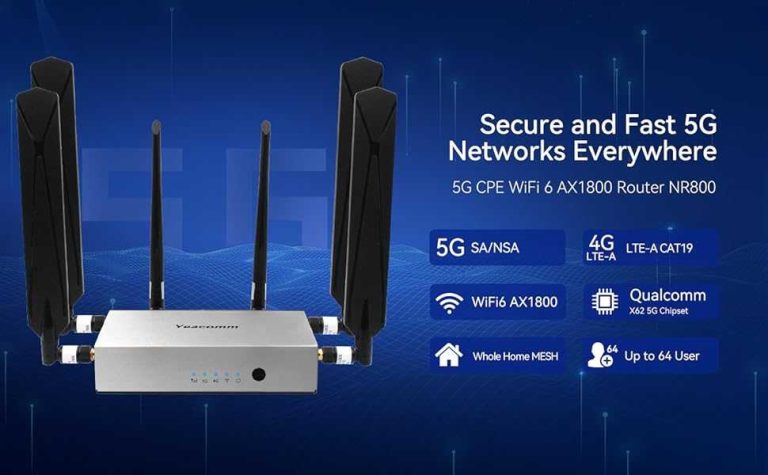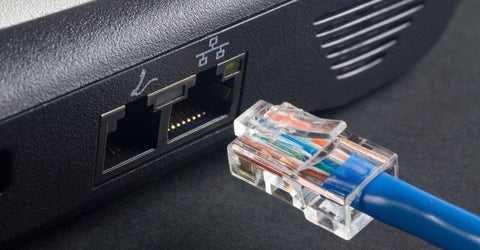If your router shows it’s connected but you can’t access the internet, don’t panic—this is a common issue with simple fixes. Restarting your router, checking your modem connection, and resetting network settings often resolve the problem quickly. Sometimes, updating your router’s firmware or changing DNS settings can do the trick too.
A quick restart of your router and modem can often re-establish the connection. Checking your cables and ensuring your internet service is active are also essential steps. These straightforward solutions can save you time and frustration, helping you get back online fast without needing technical help.
Having internet connectivity issues can be hugely frustrating, especially when your router shows it’s connected but you can’t browse or stream. Several factors can cause this disconnect, from temporary glitches to configuration errors. Whether you’re dealing with a recent setup or an ongoing problem, understanding simple troubleshooting steps can help you fix the issue swiftly. Often, the root cause lies in network settings, firmware updates, or connection integrity, and tackling these areas can restore your internet access effortlessly. This guide aims to walk you through easy-to-follow solutions so you’re back online in no time.
Router Connected but No Internet Fix: How to Resolve This Common Problem
Understanding Why Your Router Shows Connection but No Internet
Many people see their router’s lights indicate a connection, but they can’t get online. This situation happens more often than you’d think and can be frustrating. To fix it, you first need to understand what causes the problem.
A router might be connected to your device or modem but not able to reach the internet. This can happen due to several reasons, such as issues with your internet service provider, modem problems, or router settings. Being aware of these causes helps you choose the right fix.
Check Your Internet Service Provider (ISP) Status
Before diving into technical fixes, verify if your ISP has any outages. You can do this by:
- Visiting your ISP’s website or social media pages for outage updates.
- Calling their customer support to ask about service disruptions in your area.
- Using a mobile device to check if your mobile data works, confirming that the problem is with your internet connection.
If there is an outage, you need to wait until your provider fixes the issue. Otherwise, move to the next steps to troubleshoot your router and modem.
Restart Your Modem and Router
Often, the simplest fix is restarting your equipment. Power cycling refreshes the network connection and can eliminate temporary glitches.
- Turn off both your modem and router.
- Unplug them from the power source.
- Wait for about 30 seconds to 1 minute.
- Plug in your modem first and wait until the lights stabilize.
- Turn on your router and wait for it to fully boot up.
After restarting, check if your device can access the internet. If not, proceed with deeper troubleshooting.
Verify Your Cables and Connections
Loose or damaged cables often cause connectivity issues. Ensure all cables are properly connected and undamaged.
- Check that the Ethernet cable from your modem to the router is secure and undamaged.
- Inspect coaxial or fiber optic cables for any bends, tears, or loose connectors.
- Replace any damaged cables with new ones to ensure proper signal transmission.
Ensure your modem’s lights indicate proper connection to your internet service. If a connection problem remains, consider resetting your modem.
Reset Your Modem and Router
Resetting can fix misconfigured settings blocking internet access.
- Locate the reset button on your modem and router.
- Press and hold it for about 10-15 seconds using a paperclip or pin.
- Release the button and wait for devices to restart.
Note that a factory reset will erase custom settings, so keep your login details and network preferences handy to reconfigure afterward.
Check Your Router’s Settings
Incorrect settings can prevent internet access despite a physical connection.
Verify IP and DNS Settings
Ensure your router uses automatic settings.
- Log in to your router’s admin panel, usually by typing 192.168.1.1 or 192.168.0.1 in your browser.
- Navigate to the network or internet settings.
- Set IP address and DNS to obtain automatically from your ISP.
If you’ve manually entered IP or DNS addresses, verify they are correct or try switching to automatic mode.
Disable and Re-enable Your Network Adapter
On your device, turning off and on the network adapter can resolve connectivity issues.
- Open the network settings or device manager.
- Disable your Wi-Fi or Ethernet adapter.
- Wait a few seconds and then re-enable it.
Check if your device can access the internet afterward.
Update Router Firmware and Device Drivers
Outdated firmware or drivers can cause connectivity problems.
- Visit your router manufacturer’s website to check for firmware updates.
- Download and install the latest firmware following their instructions.
- Update network drivers on your computer or device accordingly.
Updated software often includes fixes for bugs that affect internet connectivity.
Check for IP Conflicts and Network Interference
IP conflicts occur when multiple devices share the same address, blocking internet access.
- Use your router’s admin panel to review connected devices and their IP addresses.
- Change the IP range or assign static IP addresses if conflicts are detected.
Wireless interference from other devices can also disrupt your connection.
Reduce Interference
Move your router away from:
- Microwave ovens
- Wireless phones
- Bluetooth devices
- Other electronics that emit radio waves
Switching to a less congested Wi-Fi channel might also help.
Configure Your Network Correctly
Proper network setup prevents many connectivity issues.
- Ensure your router’s firmware is up to date.
- Use strong passwords to prevent unauthorized access.
- Enable security features like WPA3 or WPA2.
Proper configuration ensures your network runs smoothly and stays connected.
Test with Different Devices and Connections
Testing helps identify where the problem lies.
- Use a different device to see if it can access the internet with the same network.
- Try connecting your device via Ethernet if you are using Wi-Fi.
- Connect to a different Wi-Fi network to see if your device has issues elsewhere.
This helps determine if the issue is with your device or the network.
Contact Your Internet Service Provider
If you’ve tried all the steps and still have no internet, contact your ISP.
- Explain the troubleshooting steps you’ve already taken.
- Ask if there are network issues in your area or account problems.
- Request technical support for further diagnostics or a technician visit if needed.
Your ISP can provide solutions that are beyond your control, such as line repairs or account adjustments.
Additional Tips for Preventing Future Connection Issues
Prevention is better than fixes, so keep your network healthy by following these tips.
- Regularly update your router firmware and device drivers.
- Place your router in a central location away from interference sources.
- Change Wi-Fi channels periodically to avoid congestion.
- Secure your network with strong passwords to prevent unauthorized access.
- Restart your modem and router periodically to refresh connections.
Following these simple practices can help keep your internet connection stable and reliable.
Fixing the issue of a router connected but no internet is often about systematically troubleshooting each component. From checking your cables and resetting devices to updating firmware and contacting your provider, these steps cover all common causes. Remember, patience and careful diagnosis lead to a faster solution, helping you get back online with minimal stress.
How to fix wifi connected but no internet access ( 2025 )
Frequently Asked Questions
Why does my router show as connected but I have no internet access?
This situation often occurs due to issues with the internet service provider (ISP), faulty cables, or incorrect network settings. Check if your ISP is experiencing outages and verify that all cables between your modem and router are securely connected. Ensure that the router’s configuration matches your ISP’s specifications, including any required login details or connection types.
How can I troubleshoot my router when it connects but I can’t browse the web?
Start by rebooting your modem and router to refresh the connection. If that doesn’t work, try resetting your network settings or updating the router’s firmware. Additionally, disable and re-enable your network adapter on your device. If the issue persists, perform a factory reset on your router and reconfigure it accordingly.
What steps should I take if my router is connected but there’s no internet on multiple devices?
Check if the issue lies with your internet service by connecting directly to the modem with an Ethernet cable. If the wired connection works but wireless devices don’t, verify your Wi-Fi settings. Restart your router and ensure it’s configured correctly. Contact your ISP if the wired connection also lacks internet access, as the problem might be on their end.
Could hardware faults cause my router to connect without providing internet?
Yes, hardware issues such as a malfunctioning modem, router, or damaged cables can cause this problem. Inspect all physical components for damage and replace any faulty parts. Using compatible hardware and keeping your firmware updated also helps prevent hardware-related connectivity issues.
Is there a way to fix this issue without calling my internet provider?
Yes, try resetting your router to factory settings and reconfiguring it. Double-check your network credentials and ensure your device has correct IP settings. Updating your router’s firmware can also resolve bugs. If problems continue after these steps, it might be time to replace outdated hardware or seek professional technical support.
Final Thoughts
A troubleshooting approach is essential when facing a ‘router connected but no internet fix’. Restart your modem and router to refresh the connection. Check your cables and ensure they are firmly connected. Update your router firmware for optimal performance and security.
Reset network settings on your device if issues persist. Contact your internet service provider if the problem continues after these steps. Following these tips will help you resolve the issue quickly. Achieving a stable internet connection becomes easier with these straightforward actions.

I specialize in process engineering and system optimization. I enjoy writing guides that simplify troubleshooting and help improve efficiency in everyday tech use.





